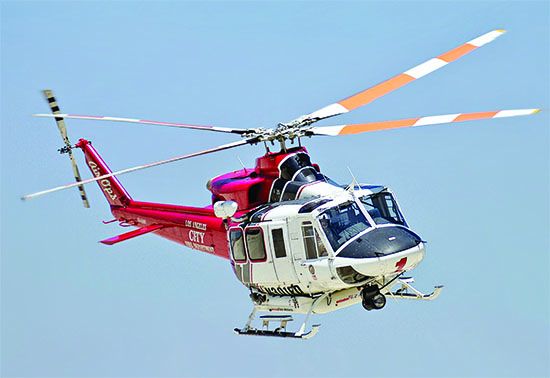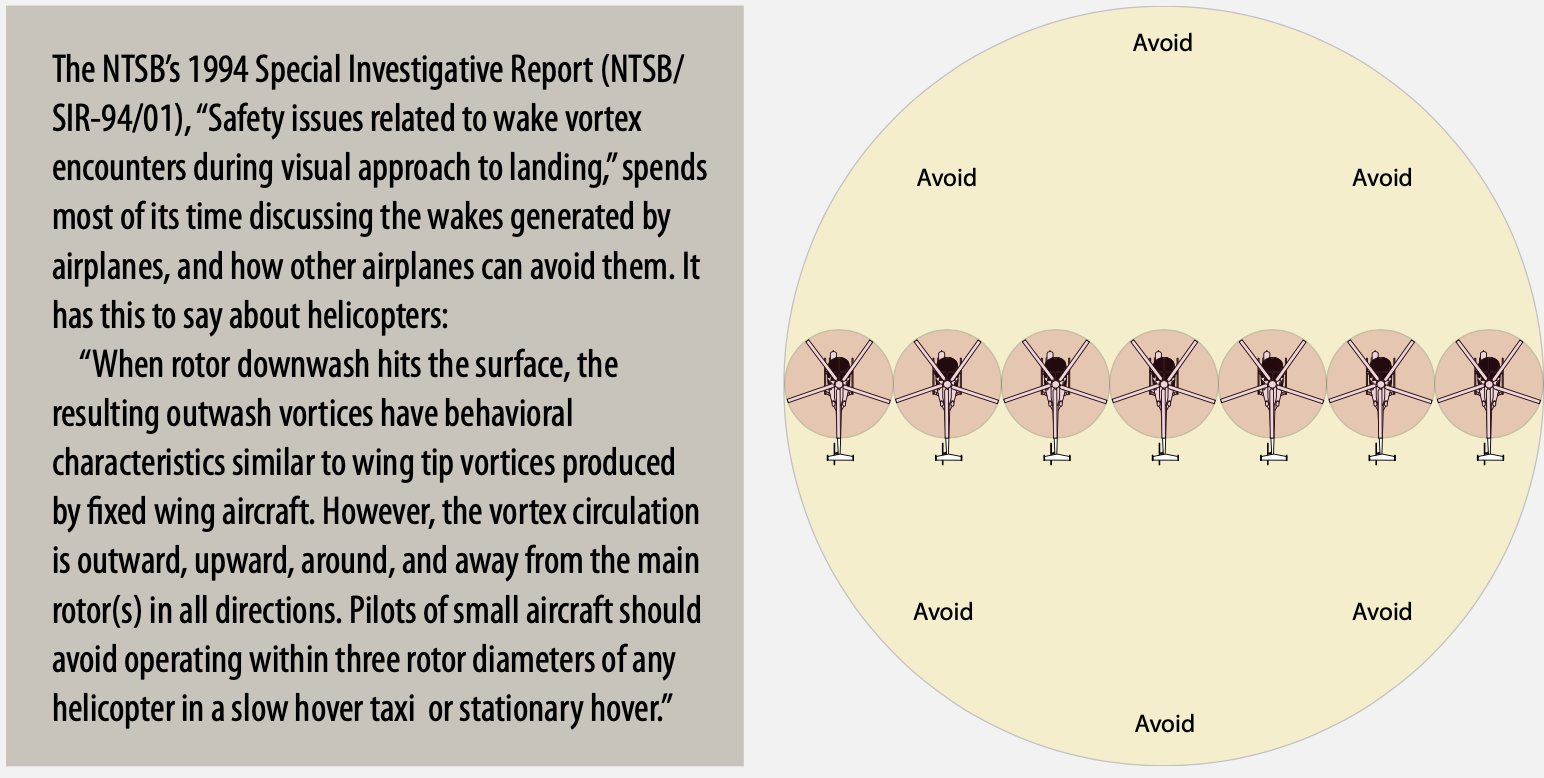
Long ago and far away, my T-hangar at a busy reliever airport outside Washington, D.C., was across from where a nearby county’s law enforcement and emergency medical services helicopter operation was based. Since I was at the end of the hangar row, they were well within 100 yards. The ’copter, a Bell 412 as I recall, came and went on an unpredictable schedule, as they do, and always seemed to come and go when my hangar door was open. It was close enough that the dust, small gravel and other loose items it stirred up easily found their way inside. I expressed my displeasure on several occasions.
But it was educational: I learned there’s a lot of force in the wake that 412 generated and that I really don’t want my airplane within its range. The thing is, the wake generated by a hovering helicopter isn’t something most pilots think about, since it’s just another aircraft moving slowly around the ramp before it departs. But hovering without any forward motion is one of the times when a helicopter’s wake production is at its greatest. And it doesn’t trail out behind it, as with an airplane—but radiates in all directions.
HELICOPTER ENCOUNTERS
The NASA Aviation Safety Reporting System (ASRS) recently published the following: “While on downwind leg [to uncontrolled airport], a light helicopter entered final approach from the north. When turning from base to final, I had him in sight near the runway threshold, slightly right of the runway. He proceeded to move right to the parallel taxiway. I continued the approach, not considering rotor wash to be a factor as he was now at the taxiway and standard glide path could have me above the area he had been near the runway. Approximately 200-300 feet past the runway threshold, the aircraft suddenly rolled right, yawed right, and sank. Opposite control input failed to arrest the roll or sink, however it did seem to slow the yaw. [The aircraft] impacted the ground right wing low, yawed slightly right and nose high. The aircraft became airborne again and I was able to maintain control and land in the grass parallel to the runway. Damage included a collapsed nose gear assembly, prop strike, gear doors and lower cowl.” There are other examples.
In a previous issue, I related an episode a couple of years ago when I crossed the wake of a U.S. military UH-60 Blackhawk helicopter. The ’copter was executing a practice approach to a towered airport and, at the time I spotted him, we both were outside the airport’s Class Delta airspace. Initially, it appeared we were at the same altitude as it transited from my right to left. That wasn’t the case, however, as I found out when I flew through its wake a minute or so later. There was a sharp jolt that knocked off my headset. It was enough of a bump to make me grateful I was below the airplane’s maneuvering speed.
Wake turbulence from another Blackhawk upended a Cirrus SR20 in December 2014, at Fort Collins, Colo. The student pilot, on his second solo flight, communicated with the Blackhawk as it landed, hover-taxied and then took off again. According to the NTSB, “Just prior to landing, he encountered turbulent air, entered into an uncommanded steep left bank, and attempted to go around. The pilot was unable to maintain control and the airplane subsequently impacted terrain and cartwheeled, which resulted in damage to the fuselage and both wings.” The student pilot was seriously injured; the airplane was substantially damaged.
The NTSB’s probable cause statement noted there is a “lack of Federal Aviation Administration wake turbulence separation criteria for a small airplane following a helicopter.”

RECOMMENDATIONS
In 1996, the FAA tested various helicopters and their wakes, even deliberately flying light GA aircraft into them. Its report, DOT/FAA/CT-94/117, “Flight Test Investigation of Rotorcraft Wake Vortices in Forward Flight,” had several recommendations. Among them:
• For ATC separation standards, helicopters should be placed into two weight-based classes, e.g., “Helo Light” for those with max weights under 25,000 lbs. and “Helo Medium” for heavier ones.
• ATC procedures should be established for when rotorcraft making decelerating final approaches mix with fixed-wing traffic.
• Rotorcraft vortices should be more thoroughly investigated.
• “Hazards associated with rotor wash generated by helicopters in hover or in air taxi operation should be investigated…. [I]t is recommended that small airplanes, at the same altitude and downwind of a hovering helicopter, maintain at least 500 feet of separation.”
WHAT YOU CAN DO
To this fixed-wing pilot, helicopters are weird. But they are useful, and share facilities with the rest of us. The sidebar above has recommendations for staying a minimum of three rotor discs away from a hovering helicopter. We’d say that’s fine for an R44, but it’s a bit close for a Blackhawk or Chinook. Bump it up to five or more. When airborne, treat them like a non-heavy jet transport and give them appropriate space: Stay above their wake.
The worst case is trying to land or takeoff with a helicopter adjacent to the runway, even if it has already departed. The Blackhawk in the Fort Collins accident took off 30 seconds before the Cirrus went out of control.
Jeb Burnside is this magazine’s editor-in-chief. He’s an airline transport pilot who owns a Beechcraft Debonair, plus the expensive half of an Aeronca 7CCM Champ.



